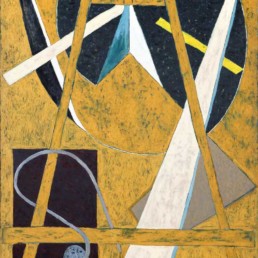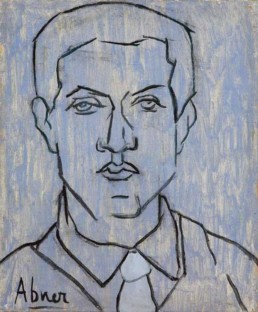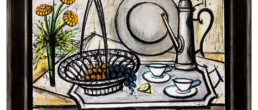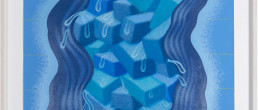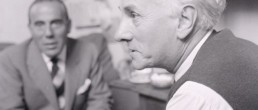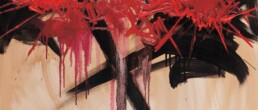Raymond Abner
1919 (Cairo) - 1999 (Paris)
Biography
Raymond Abner was born in Cairo in 1919. Very quickly, he has been passionate by drawing and painting, but his father wanted him to have a solid education and a “real” profession. To do so, he sends his son to Mulhouse, where Raymond studies engineering between 1937 and 1939. At 20 years, Abner feels free to focus on art and starts to study at the school of fine arts in Cairo from 1941 to 1943. He starts to exhibit his figurative works at the Museum of modern art and the city buys one of his paintings. Abner comes in London in 1945, where he takes lessons at the St Martin’s schooluntil 1947. Encouraged by Daniel Wildenstein, whose gallery is located not far from the school, he fully dedicates himself to painting. In 1947 he moves to Paris and works regularly at the “Académie Julian” and “La Grande Chaumière” where he meets the grandson of Matisse, who presents him his grandfather. At that time Matisse is confined to bed and works on the stained glass windows of the Vence Chapel. This meeting is very important but it is with Fernand Léger, in 1948, that his real commitment as a painter will definitively be confirmed.
Abner presents himself to Léger saying: “Mr. Léger, I don’t like your paintings. This is why I come to learn from you.” The true style of Abner will then reveal itself at the master’s atelier at Pigalle. Légerwas not only a great painter, but also a great teacher ; it is with him that Abner will learn how to think big and draw. He gets initiated in reporting volumes, lines, and colors. The master’s example and lessons will strengthen him and become the basis of his own artistic style. Abner next meets Josette Gris, the wife of Juan Gris, who is interested in his work and subsequently convinces Daniel-Henry Kahnweiler, the famous gallery owner, to visit Abner at his atelier to see his work. Enthusiastic about his work, the famous merchant of Picasso, Braque, Gris and Derain follows his creation for one year, after which he proposes him to sign an exclusive contract in exchange of his entire work. The idea to give away all his works scares Abner who refuses and prefers to keep his independence. In 1950 Abner moves in an atelier in the heart of Montparnasse, one of his neighbors is the painter Foujita, 33 years his elder. The 50s in Montparnasse is a period of great artistic effervescence. In 1952 he is more and more attracted to Abstraction with, as a starting point, his work of variations on the theme of the easel, between 1948 and 1950. This time marks the beginning of his period of Geometrical Abstraction where he creates a deeper space. He exposes the works of this period at the gallery Denise René in 1956. Between 1960 and 1970, he is taken to the so-called period “aerial views”. Abner identifies himself with a spiritual quest on the position of man in space, space that man can control. These researches are concomitantly to the conquest of the moon. In 1972 he moves to Paris in an atelier in the 15th district, he will stay there until his death; his paintings will then return to the figurative.


